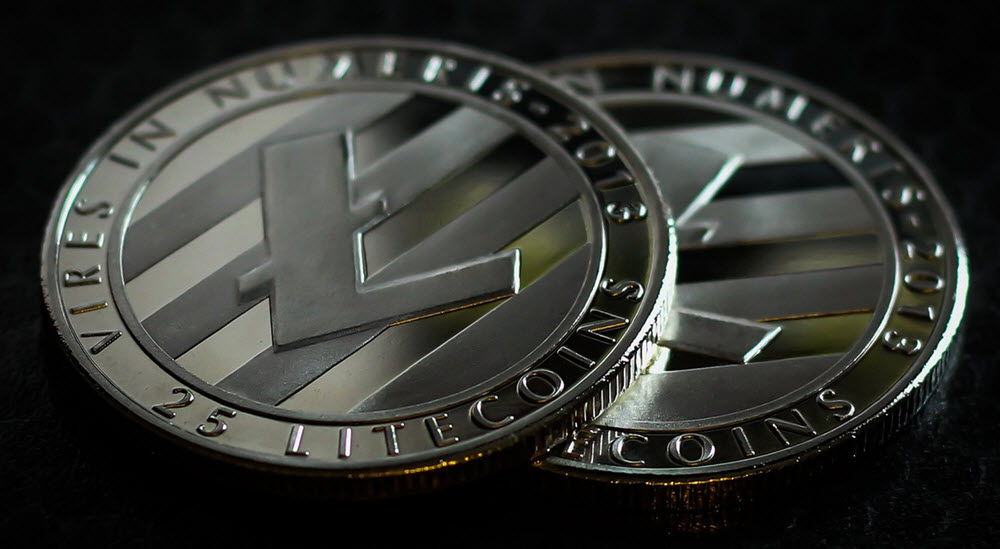Cryptocurrency trading is super hot and there are a lot of interesting opportunities out there, including options for daytrading and swing trading.
If we look at some of the more well-established cryptocurrencies, we can see that they are caracterized by high volatility. Of course, this is attractive to many traders and investors.
Tips! Nowadays, you don´t have to actually own cryptocurrency to gain exposure to cryptocurrency. You can for instance trade in Crypto based Contracts for Differences (CFD) instead. CFD:s also make it easy to profit in both upwards and downwards markets.

Owning cryptocurrency
If you want to buy and own cryptocurrency, you can either keep it in your own cryptocurrency wallet or keep it in an online account with a broker or exchange.
Some traders opt for a combo, where they keep cryptocurrency for short-term trading in their broker/exchange account, while their longer-term cryptocurrency investments are kept in a personal cryptocurrency wallet. With a personal wallet, you don´t have to worry about the broker/exchange being hacked, filing for bankruptcy or similar.
Brokers for cryptocurrency trading
Some brokers offer direct trading in cryptocurrency, while others offer products (such as CFDs) that gives you exposure to cryptocurrencies.
It is also worth mentioning that some brokers specialise in cryptotrading and crypto-fiat trading, while others are broader and also offer more traditional forex trading.
Exampels of brokers
- AVA
- eToro
- BitMEX
- Coinbase
- PRIME XBT
- Nord FX
- IC Markets
- Coinmama
- Forex.com
- ZuluTrade
- OctaFX
Can I do crypto trading on my phone?
Many of the platforms for crypto trading are available for mobile devices, both smartphones and tablets. Some work directly in the browser, but may require you to download and install an app instead to get an optimal user interface for a small screen. Apps are available for both iOS and Android.
Fees on exchanges
Before you start crypto trading on an exchange, always check up what it will cost you in fees. You don´t want fees to eat up all your profits. It is important to select a broker and platform where the fee structure is suitable for your particular trading style. A daytrader opening hundreds of small positions per day shouldn´t go for a solution where you pay big fixed open and close commissions.
Here are a few examples of fees to look out for and evaluate:
Exchange fee. Some exchanges will charge you a general fee to be on the exchange. Make sure you know how it is calculated before you committ to anything. At some exchanges, different alt coins and currency pairs have different fee structures.
Trading commission. A fee paid to open and close positions.
Marker fee. A fee paid to make an offer to sell.
Taker fee. A fee paid to make an offer to buy.
Banking fees. Depositing and withdrawing money from your trading account can cost money. There can be a difference between depositing vs. withdrawing, and between various methods. Some banking fees are fixed (per transaction), others are a percentage of the transaction amount.
Please note: When the broker and the platform are two different entities, you might have to pay both of them. Always check this in advance to avoid unpleasant suprises.
Examples of cryptocurrencies
Bitcoin

Bitcoin (BTC) is the most well-established of the cryptocurrencies and has the largest market capitalization. Launched back in 2009, this cryptocurrency rely on the peer-to-peer bitcoin network, where transactions are verified by network nodes through cryptography and recorded in a public distributed ledger. This ledger is known as the blockchain.
Ledger start: 3 Januari, 2009
Timestamping scheme: proof-of-work (partial hash inversion)
Hash function: SHA-256
Litecoin

Litecoin (LTC) was launched in 2011 as an alternative to Bitcoin for those seeking a decreased block generation time. The main idea was to create a cryptocurrency that would confirm transactions faster than Bitcoin.
When it comes to the technical solutions, Bitcoin and Litecoin are very similar, and Litecoin is a source code fork of the Bitcoin Core client.
While the identify to the person (or persons) behind the Bitcoin paper remains unknown, Litecoin was launched by Charlie Lee.
Notable difference between Bitcoin and Litecoin:
Litecoin has a shorter block generation time (2.5 minutes instead of 10 minutes)
Litecoin has a larger maximum number of coins
Both use proof-of-work, but Litecoin uses the hashing algorithm scrypt instead of SHA-256
Litecoin uses a slightly modified GUI
Zcash
Launched in 2016, Zcash aims to provide a higher level of pricavy protection compared to Bitcoin. It is based on Bitcoin´s codebase and share many similarities with Bitcoin. The fixed total supply of Zcash is 21 million coins.
Work on the development of Zcash commenced in 2013 by Professor Matthew Green and some of his graduate students at Johns Hopkins University.
Zcash transactions can either be transparent or rely on the zero-knowledge proof zk-SNARKs. In the latter case, the transaction is shielded by a z-addr.